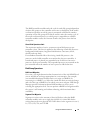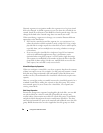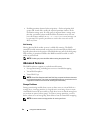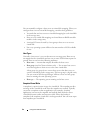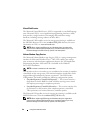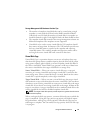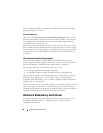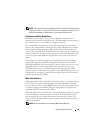
44 Using Your RAID Enclosure
You can manually configure a host server-to-virtual disk mapping. When you
configure host server-to-virtual disk mapping, consider these guidelines:
• You can define one host
server
-to-virtual disk mapping for each virtual disk
in the storage array.
•Host
server
-to-virtual disk mappings are shared between RAID controller
modules in the storage array.
• A unique LUN must be used by a host group or host
server
to access a
virtual disk.
• Not every operating system will have the same number of LUNs available
for use.
Host Types
Generally, a host server is a server that accesses a storage array. Host servers
are mapped to the virtual disks and use one or more iSCSI initiator ports. In
general, host servers have the following attributes:
•
Host name
— A name that uniquely identifies the host
server
.
•
Host group
(used in Cluster solutions only) — Two or more host
server
s
associated together to share access to the same virtual disks.
A host group is a group of two or more host
server
s that share access to
specific virtual disks on the storage array. This host group is a logical entity
you can create in MD Storage Manager. All host
server
s in a host group
must be running the same operating system.
•
Host type
— The operating system running on the host
server
.
Snapshot Virtual Disks
A snapshot is a point-in-time image of a virtual disk. The snapshot provides
an image of the virtual disk at the time the snapshot was created. Typically,
you create a snapshot so that an application (for example, a backup
application) can access the snapshot and read the data while the source
virtual disk remains online and user-accessible. When the backup is
completed, the snapshot virtual disk is no longer needed. You can create up to
four snapshots per virtual disk.




